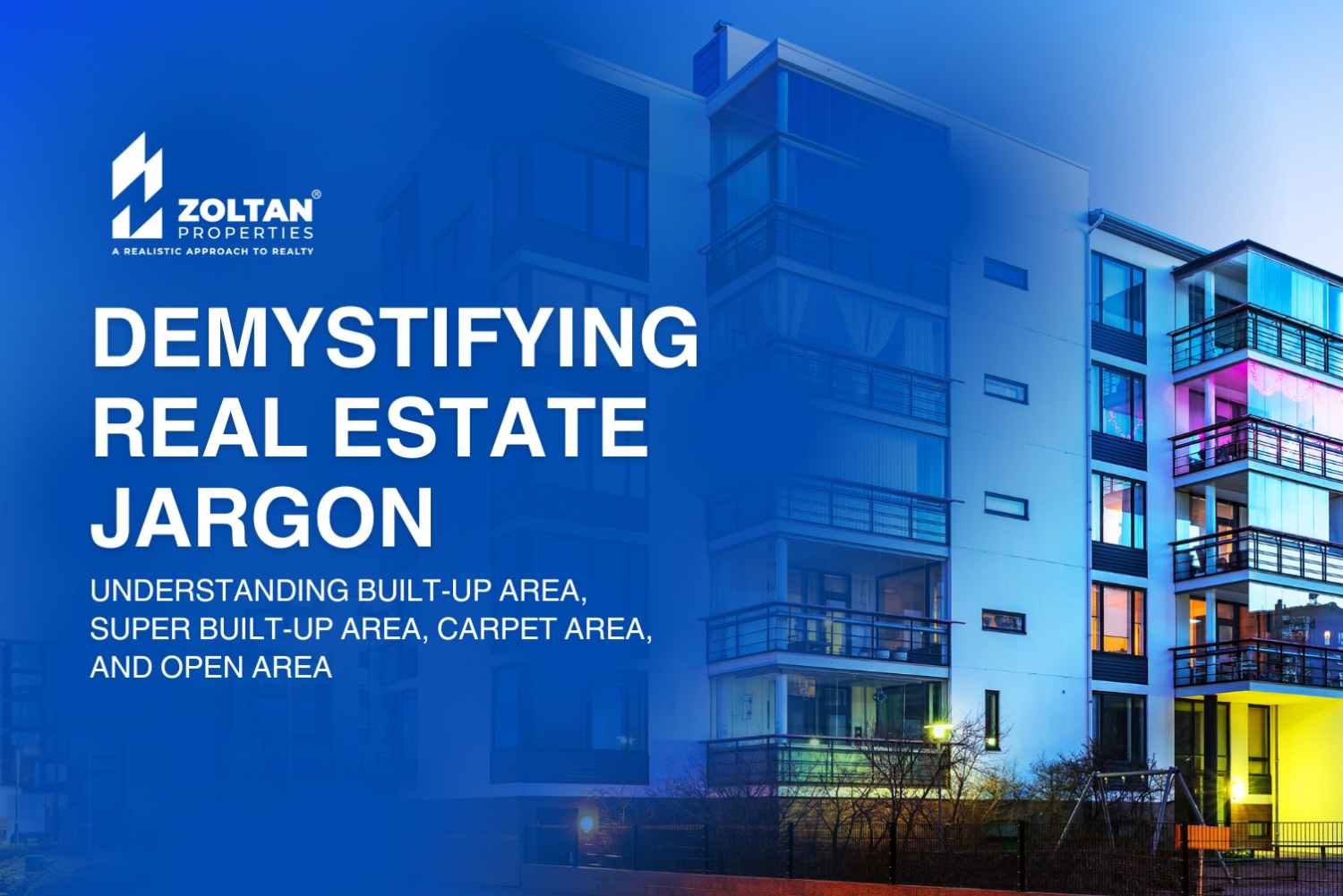Introduction
Real estate transactions can often be confusing, especially when it comes to understanding the various terminologies associated with property measurements. Terms like built up area, super built up area, carpet area, and open area are commonly used but are often misunderstood. In this blog, we aim to demystify these real estate jargon terms and provide a clear understanding of what they entail. Whether you are a homebuyer, investor, or simply curious about real estate, this comprehensive guide will help you navigate the world of property measurements with confidence.
Built Up Area
Built up area refers to the total area that includes both the carpet area and the walls of a property. It encompasses the internal spaces of a building, including all the rooms, hallways, staircases, and other enclosed areas. Built up area includes the thickness of the walls, resulting in a larger measurement compared to the carpet area. It is important to note that built up area does not include common areas, balconies, or terraces. This measurement is crucial for understanding the total usable space within a property and plays a significant role in determining the property's value and pricing.
Super Built Up Area
Super built up area, also known as the saleable area or the built-up area plus common areas, goes beyond the boundaries of a specific unit. It includes the built up area and a proportionate share of common areas such as lobbies, corridors, staircases, lifts, gymnasiums, swimming pools, gardens, and other shared amenities. Super built up area is calculated by allocating a percentage of the common areas to each unit. This measurement is often used by developers to determine the price of a property as it takes into account the shared spaces and amenities provided to all residents.
Carpet Area
Carpet area is the actual usable floor area within the walls of a property. It is the area on which a carpet or any other flooring material can be laid. Carpet area includes all the spaces within the internal walls of a property, excluding common areas, walls, balconies, and terraces. This is the most important measurement for homebuyers as it determines the actual living space available to them. When comparing properties, it is crucial to consider the carpet area to accurately assess the size and functionality of a unit.
Open Area
Open area refers to the outdoor spaces surrounding a property, such as balconies, terraces, gardens, lawns, and courtyards. It is the area that is not enclosed by walls and is intended for recreational or outdoor activities. Open area adds value to a property, providing residents with additional space to relax, entertain, or enjoy outdoor activities. While open area is not included in the built up or carpet area calculations, it contributes to the overall appeal and livability of a property.
What is Loading Factor and how to calculate it?
Loading factor in real estate is a term that refers to the difference between the total space and the total usable space in a property. It is usually expressed as a ratio or a percentage. It helps buyers understand how much space they are paying for versus how much space they can actually use.
To calculate the loading factor, you can use this formula:
Loading factor = (Total area / Usable area) - 1
For example, let’s say you want to buy/rent an office space that has a usable area of 1000 sq. ft. and a rentable area of 1200 sq. ft. The loading factor would be:
Loading factor = (1200 / 1000) - 1
Loading factor = 0.2 or 20%
This means that 20% of the buyable/rentable area is not usable by the you, but is shared with other tenants or used for common facilities such as elevators, lobby, parking, etc.
The ideal loading factor depends on the type and location of the property, but generally it should be below 30% for an apartment and below 15% for an office space. A higher loading factor means that the buyer/tenant is paying more for less usable space.
Conclusion
Understanding the jargon associated with real estate measurements is essential for making informed decisions when buying, selling, or investing in property. By comprehending the differences between built up area, super built up area, carpet area, and open area, individuals can accurately assess the size, functionality, and value of a property. Armed with this knowledge, potential homebuyers can make more confident choices, while investors can evaluate the potential returns on their investment. Remember, always inquire about the specific measurements and definitions used by developers or sellers to ensure transparency and clarity in your real estate transactions.

 IN
IN
 France
France
 Germany
Germany
 Greece
Greece
 India
India
 Saudi Arabia
Saudi Arabia
 Spain
Spain
 United Arab Emirates
United Arab Emirates
 United Kingdom
United Kingdom
 United States
United States






